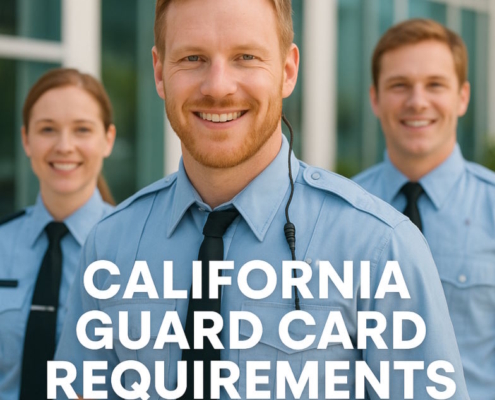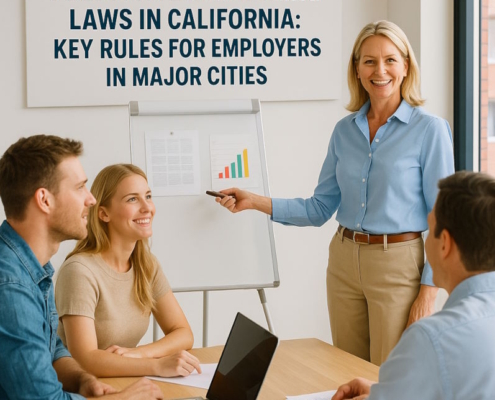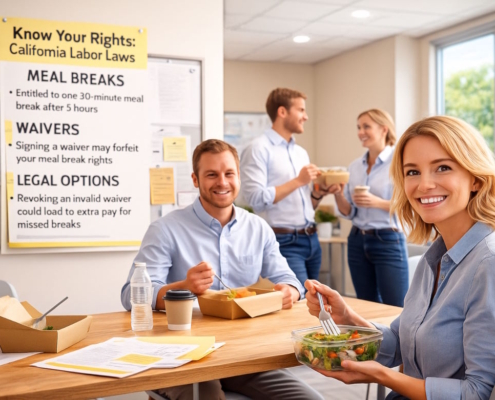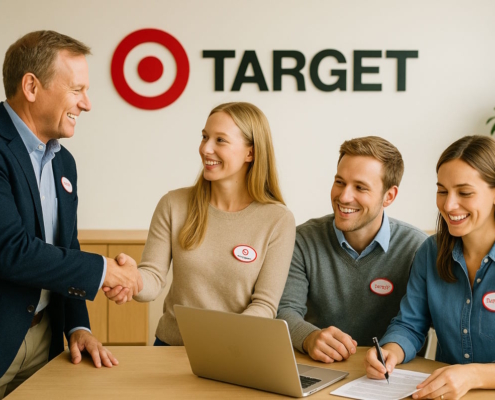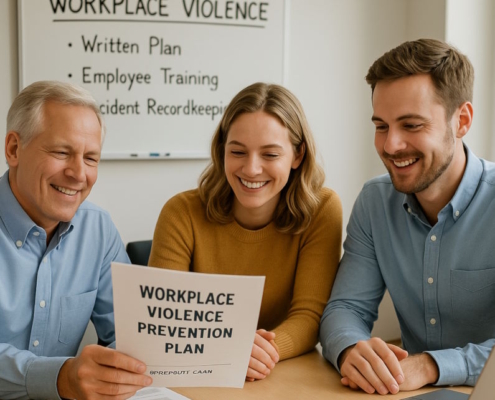Introduction
Envision entering a conference where nobody is paying attention, everyone is arguing with one another, and the man in the corner hasn’t spoken in 2 weeks. Does it sound familiar? Alternatively, your team may be more of the ideal type—communicative, cooperative, and always one idea away from innovation.
How are the two different?
Group dynamics, which are the foundation of any productive workplace group, are the key to success. How can group dynamics in the workplace benefit your team or company? What is the correct way, and why is it significant?
What Group Dynamics Mean in the Workplace
Employee interactions are influenced by behavioral and psychological elements known as group dynamics.
Consider it the vibe check, the social glue, and the unspoken norms. This factor points out who leads discussions, how arguments at the office are solved, who gets praised (or not), and similar decisions.
Solid group dynamics in the workplace promote creativity, allow co-workers to cooperate, and build trust. On the other hand, ineffective dynamics cause tension, halt development, and make everyone want to get home.
Anyone working in a workplace team has to understand this apparent engine; it’s not just important for HR or team leaders.
How Group Dynamics at a Workplace are Shaped by Structure
What does group dynamics actually mean in practice?
Every group’s achievement or failure is fueled by this unseen force. Additionally, the structure you establish as a manager will have a significant impact on how well your team functions under pressure.
Whether on purpose or not, every team of workers operates under a certain structure. Common structures have the following effects on group dynamics:
- Top-down structure: Communication moves down from a single leader who guides the group. Although it works well for making decisions quickly, if it is abused, it can hinder teamwork.
- The chain structure: It functions well in the manufacturing industry, but can result in tasks stacking up if work is not done in a specific order.
- Completely connected: Sharing ideas is easy and effective for coming up with new approaches, but clear communication rules are necessary.
- Layered structure: Sub-teams are managed by mid-level leaders who relay information. This preserves clarity and is effective in big companies.
Every structure introduces a unique kind of interdependence. To be effective, group dynamics in the workplace should include elements of accountability, cooperation, and independence.
The Secret Factors That Underlie Strained or Strong Group Dynamics
Every team at work has a rhythm. Some have a unified beat, while others have a disorganized drum sound. But behind every harmonious cooperation or chaotic breakdown, there are important psychological levers that influence group dynamics.
- Psychological safety and trust
Trust is the foundation of effective group dynamics. When workers feel free to express their opinions, make mistakes, or pose “silly” questions without worrying about being judged, collaboration rises. However, if colleagues discreetly assess the potential consequences of their contributions, innovation will halt.
Being too amiable does not equate to psychological safety. It’s about respect for one another and the ability to express one’s opinions without fear of mockery.
- Unspoken Hierarchies and Roles
Even in a group without formal titles, power dynamics will materialize. Who steers the conversation? And who is interrupted? Who is the unofficial therapist on the team? The impact of these unofficial roles ranges from morale to productivity. If ignored and unaddressed, they can easily cause conflict.
- Bias and Social Identity
We are drawn to those who share our experiences, whether we acknowledge it or not. That tendency, though, has the potential to erect imperceptible obstacles among coworkers. Isolating voices, stifling other viewpoints, and creating cliques that undermine productive team relationships are all consequences of unchecked bias.
- Mismatches in Communication
While certain individuals require time to analyze and prefer comprehensive emails, others flourish in quick-fire Slack chats. Style is often the cause of misunderstandings rather than intention. These discrepancies can also break group dynamics in the workplace and lead to needless conflict when teammates believe their method is the only way.
Group dynamics types that you may encounter at work
Workplace groupings have personalities, just like individuals do. Some are collaborative and high-functioning, while others are educational.
You’ll probably witness the following four forms of group dynamics in action:
- Collaborative and cohesive
High levels of trust, respect for one another, open communication, and common objectives are the holy grail. These groups function like oiled machinery, but they also allow for sincere discussions, embrace conflict, and foster creative tension.
Advantages: Resilience, inventiveness, and flexibility.
Difficulties: Danger of complacency, excessive concord, and phony friendliness.
- Polite and Conflict-Averse
On the outside, everything appears to be peaceful, yet important problems are being overlooked. The feedback is diluted. Meetings are full of murmured verbal agreements and hazy nods. Although these group dynamics might seem natural, they steer clear of discussions that are essential for development.
Advantages: Low-key drama and emotional safety.
Difficulties: Insufficient responsibility and unresolved conflict.
- Fragmented and Competitive
Each employee is out for themselves. Credit is money, and individual goals take precedence over teamwork. There is selective communication and conditional assistance.
Advantages: High achievers can flourish under stressful situations.
Difficulties: Burnout, back-channeling, and mistrust.
- Disengaged and Passive
This group is mentally exhausted. There is no effort, meetings are quiet, and ideas are not questioned. This relationship is not driven by emotion or drama, but rather by apathy.
Advantages: Stability (just almost).
Difficulties: Problems with retention, stagnation, and a lack of innovation.
The first step in changing group dynamics in the workplace is identifying the kinds that are at work. Dynamics need to be named in order to be changed; they don’t correct themselves.
How to Communicate with Your Team About Group Dynamics
It seems like an effective way to get people to glaze over when you say, “Hey team, let’s talk about our group dynamics.” So, how can you make group dynamics memorable without coming across like a psychology professor?
Attempt to make investing in your staff feel relatable and personal by using an introduction such as:
“The way we collaborate, what works, and what doesn’t are all influenced by group dynamics. This is about knowledge, not blame. Together, we can create something greater if we recognize patterns.”
- Employ analogies. Make comparisons between your team and an orchestra, sports team, group chat, or amusing meme. Emphasizing the vital function each member serves is what counts. Identify how your ability to sync affects the quality of your collaboration.
- Normalize discussing it. Make it acceptable to talk about patterns of behavior without pointing fingers. Present it as an opportunity for everyone.
For instance:
“Group dynamics are a part of any team, including ours. Let’s determine what is effective and what we wish to enhance.”
“How can I strategically add to the team?” ask yourself. There are instances when it involves coaching, nurturing, acknowledgment, and team development.
Developing Positive Team Environments for Improved Outcomes
How does one go from well-meaning intentions to genuine transformation?
There is more to creating positive, productive workplace chemistry than virtual high fives, pizza Fridays, and the odd Slack emoji. Although those superficial actions can raise spirits temporarily, sustained team health requires deeper, deliberate work. It takes clarity, interaction, vulnerability, and enjoyment to foster strong dynamics.
Fortunately, it is possible to achieve dynamic transformation, and even small adjustments can have a big impact.
- Encourage psychological security
- Explain expectations and roles clearly
- Encourage constructive criticism.
Can Having Fun Improve Group Dynamics at Work?
Indeed!
Consider creative contests, activities that require problem-solving, or an unexpected volunteer trip. From increasing cooperation to reducing conflict, organized team-building activities offer entertaining ways to match enjoyment and connection with organizational objectives.
Activities that are well-designed also allow your team to practice problem-solving techniques, flexibility in dealing with varied working styles and trust-building in an environment where mistakes are not penalized.
What was the outcome? The group you leave with is more self-aware, more aligned, and capable of supporting one another, communicating more effectively, and working as an integrated team when it matters most.
It’s all about group dynamics at work
Group interactions are likely to leave a mark on every summary, although they are rarely part of the spreadsheet’s data. No matter how your team is set up, how they interact, communicate, and work is significant.
Discord is less likely to occur between us and people we interact with, feel a strong connection with, or feel we know well.
Helping people realize that it requires a variety of people to achieve the best results is what we hope to do. There are numerous ways to view the world, but we have one perspective based on our intellect, style, and abilities.
Team dynamics are typically fascinating and enjoyable when we accept and appreciate them.
In addition to boosting morale, effective group dynamics in the workplace also increase output, loyalty, productivity, agility, and creativity. They make the difference between merely getting by and truly succeeding as a group.
Are you prepared to improve the relationships among your company team members?



